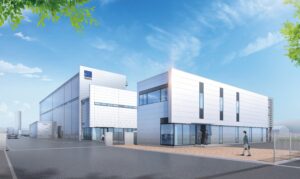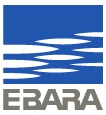Case Study: Ebara Designs and Manufactures System of Hydraulic Parts Using Turbodesign1
Ebara Corporation is committed to becoming an environmentally aware enterprise and has adopted a corporate philosophy that stresses extensive contribution to society by providing superior technologies and services related to water, air and environment.
Ebara’s Fluid Machinery & Systems Company is the oldest of Ebara s three business groups and boasts a top-level technologies to world-class standards.
For many years, Ebara’s Fluid Machinery & Systems Company has provided pumps, fans, compressors, chillers and other machinery and related equipment that serve as the infrastructure of daily life and industry. To create products that are competitive and environmentally friendly, the company continues to seek improvements in economic efficiencies and reliability, and it is developing progressive technologies aimed at ongoing improvements in energy efficiency, compactness, weight reduction and longevity.
Incorporating Turbodesign1
Ebara has already established facilities for the development and fabrication of new pumps, which enables the manufacture of hydraulic parts for custom made pumps within a short period using CAD data. This system now links to Turbodesign1, a software module by Advanced Design Technology that uses 3D inverse design, in which blade geometry is computed for a specific blade loading distribution and a performance prediction method by Computational Fluid Dynamics (CFD) code. The newly developed processes of the design and fabrication system for hydraulic parts of the pumps are constructed in the following stages:
- Hydraulics design stage
- Material casting stage
- Machining stage
- Inspection stage
In order to design hydraulic pump parts, Turbodesign1 software was introduced into the design system together with CFD. The software was applied to find optimum blade geometry for various types of pumps such as bold type diffuser pumps, volute pumps, multistage pumps and sewage pumps. For these types of pumps, the optimum design parameters that enabled the highest efficiencies, highest suction performances, smallest sizes, stall-free characteristics and load limit characteristics, have been established in a wide range of specific speeds.
With regard to manufacturing, an original three-dimensional CAD system has been developed for the three-dimensional model geometry of hydraulic parts. In this system, the three-dimensional solid model can be formulated by the blade surface profile obtained by the inverse design method together with the preliminarily optimized meridional shape on the shroud and hub. Moreover, the fillets between the blade and shroud or hub surface can be automatically formulated. It was possible for the solid model data of the whole impeller to be prepared within a short period from the data file of the blade surface.
Rapid Prototyping (RP) fabrication technology was applied to manufacture the model pumps. As for the fabrication of impellers, a Selective Laser Sintering (SLS) system apparatus was used to formulate a high strength glass of nylon resin model. A Laser Stereotype Lithography (LSL) apparatus was used for the casing or diffuser model, as it permitted production of a large sized epoxy resin model. The completed hydraulic models were set on a three-dimensional Coordinate Measurement Machine (CMM), and its coordinates were automatically measured.
The fabricated hydraulic model was placed in an exclusive use performance testing apparatus, which conducted the general performance test and reverse flow characteristics test in full automated mode.
Fabrication of hydraulic parts for production pumps
The investment precision casting process using RP technology also was adopted for the fabrication of hydraulic parts for the production pumps. The RP system directly fabricated a lost form pattern for casting or indirectly a wax model via a master model, which was then applied to the investment precision casting process to produce the metallic hydraulic parts. The hydraulic parts were machined by a flexible manufacturing system comprised of a 5-axis machining center, a turning machining center, an optical alignment unit, an automated transfer machine, an automated warehouse and a CNC machine.
Results
Our new integrated system based on Turbodesign1 and the new fabrication system enabled us to shorten the design time from a week to a few days, the fabrication period from six weeks to one week, and we have achieved a marvelous reduction of the development time. The lead time for custom pump development is now just two weeks.
Author: Takashi Enomoto, General Manager, Fluid Dynamics
Ebara Corporation, Fluid Dynamics Technologies Development Office, Custom Pump Development Department, Fluid Machinery & Systems Company
Source: Advanced Design Technology Ltd







